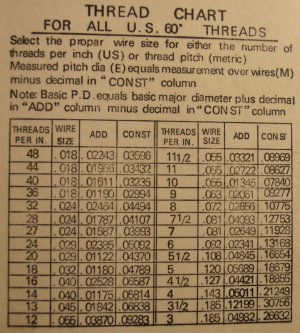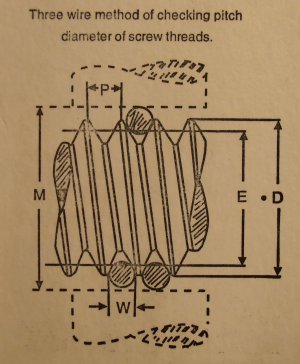- Joined
- Oct 6, 2010
- Messages
- 699
I need to cut a male 2 ¼-6 thread (spindle thread plug gage) and have been looking at the options for measuring the thread. One option is to purchase a dedicated 2 to 3 inch diameter thread micrometer. This is not a likely choice for me due to the cost but the look has raised some questions. The information provided by web sites that sell this kind of tool leave me with the question of the number of anvils you would expect to be supplied with this size thread micrometer. Some say 4 anvil sets, some say anvils are separate option, and some just say the quantity supplied varies with micrometer range. I looked at an old incomplete B&S 3 to 4 inch diameter range set and there are slots in the box for 7 anvils covering 2.5 to 64 threads-per-inch. I don’t know if all seven were originally supplied for that micrometer since only one set of anvils was in the box. Another old B&S thread micrometer set with the range of 1 to 2 inch diameter had 7 anvils in the box covering the range of 2.5 to 64threads per inch.
The question is what is normal thread-per-inch that a 2-3 inch diameter thread micrometer would be expected to measure and have anvils for? Thanks in advance for any input on this question.
Benny
The Orphanage Never Closes
The question is what is normal thread-per-inch that a 2-3 inch diameter thread micrometer would be expected to measure and have anvils for? Thanks in advance for any input on this question.
Benny
The Orphanage Never Closes



